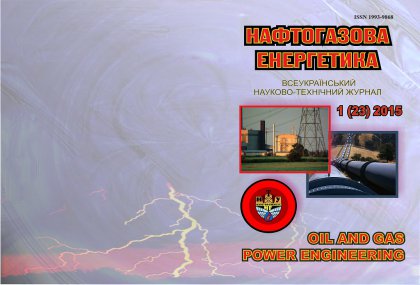SHALE GAS WITHOUT ECOLOGICAL RISKS
Keywords:
oil shale, shale gas, shale oil, in-situ retorting, model, engineering and economic evaluations (EEE).Abstract
The article deals with the advantages of in-situ (underground) oil shale retorting by means of the formation thermozoned resistive arc heating in comparison with the industrial techniques used today. The efficiency of the in-situ method is conditioned by exclusion from the technique of a great number of preparation and utilization operations, associated with the raw material extraction, which forms a high technical and economic potential for development of the underground and in-situ oil shale gasification methods. The suggested solutions are based on the experience of modern horizontal well drilling in oil and gas production, as well as on the electrical methods of thermochemistry, that provides a possibility to develop deep-lying oil shale and at the same time provide energy and economic efficiency of thin formation development. Application of in-situ gasification can significantly reduce initial capital investments for construction of ground infrastructure of industrial facilities and communications, eliminating one of the most important factors of development retention, which is typical for mining companies. The authors’ to parameterize the technological process and evaluate energy and economic efficiency of development of a formation with the specified geological data and oil shale physical-chemical characteristics. The temperature field, which is generated in the process working area and which is moved with the calculated speed inside the well formation, was selected for the process as a basis for the mathematical model development.
Downloads
References
топлива» (Институт физико-органической химии и углехимии (ИнФОУ) им. Л.М. Литвиненко Национальной академии наук Украины, Донецк, Украина; Институт теплофизики им. С.С. Кутателадзе СО РАН). – Новосибирск,
2012.
2 Нефть сланцевых плев – новый вызов энергетическому рынку? / Грушевенко Д., Грушевенко Е.; под ред. Макарова А., Митровой Т, Кулагина В. // Центр изучения мировых энергетических рынков ИНЭИ РАН: Информацион-
но-аналитический обзор. – Ноябрь 2012. – 49 с.
3 Энергетика на базе новых технологий использования низкосортных топлив / А.Ф. Гаврилов // Работы ОАО «Энергетический институт им. Кржижановского» (ЭНИН), г. Москва. Режим доступа: http://www.mtu-net,ru/lge/.
4 Справочник по переработке горючих сланцев / [Барщевский М.М., Безмозгин Э.С., Шапиро Р.Н.] – Ленинград: Государственное научно-техническое издательство нефтяной и горно-топливной литературы, Ленинградское
отделение, 1963. – 239 c.
5 Пат. 87689, Украина, Способ подземной газификации углеводородсодержащего пласта / Баженов Е.В., Студеняк В.И., Троценко Э.А., Шварцман Л.Я – № u 2013 11803; заявл. 07.10.13; опубл. 10.02.14, Бюл. № 3. – 5 с.
Режим доступа: http://uapatents.com/12-87689-sposib-pidzemno-gazifikaci-vuglevodenvmisnogoplasta. html.
6 Обзор современных термических методов переработки горючих сланцев и экологические аспекты их применения / [Зюба О.Г., Глущенко О.Н.] // Нефтегазовая геология. Теория и практика. – 2012. – Т. 7. – № 4.
7 Мартинсон Л.К. Дифференциальные уравнения математической физики / Л.К. Мартинсон , Ю.И. Малов. – М.: Изд-во МГТУ им. Баумана Н.Э., 2002. – 368 с.


.png)






1.png)









